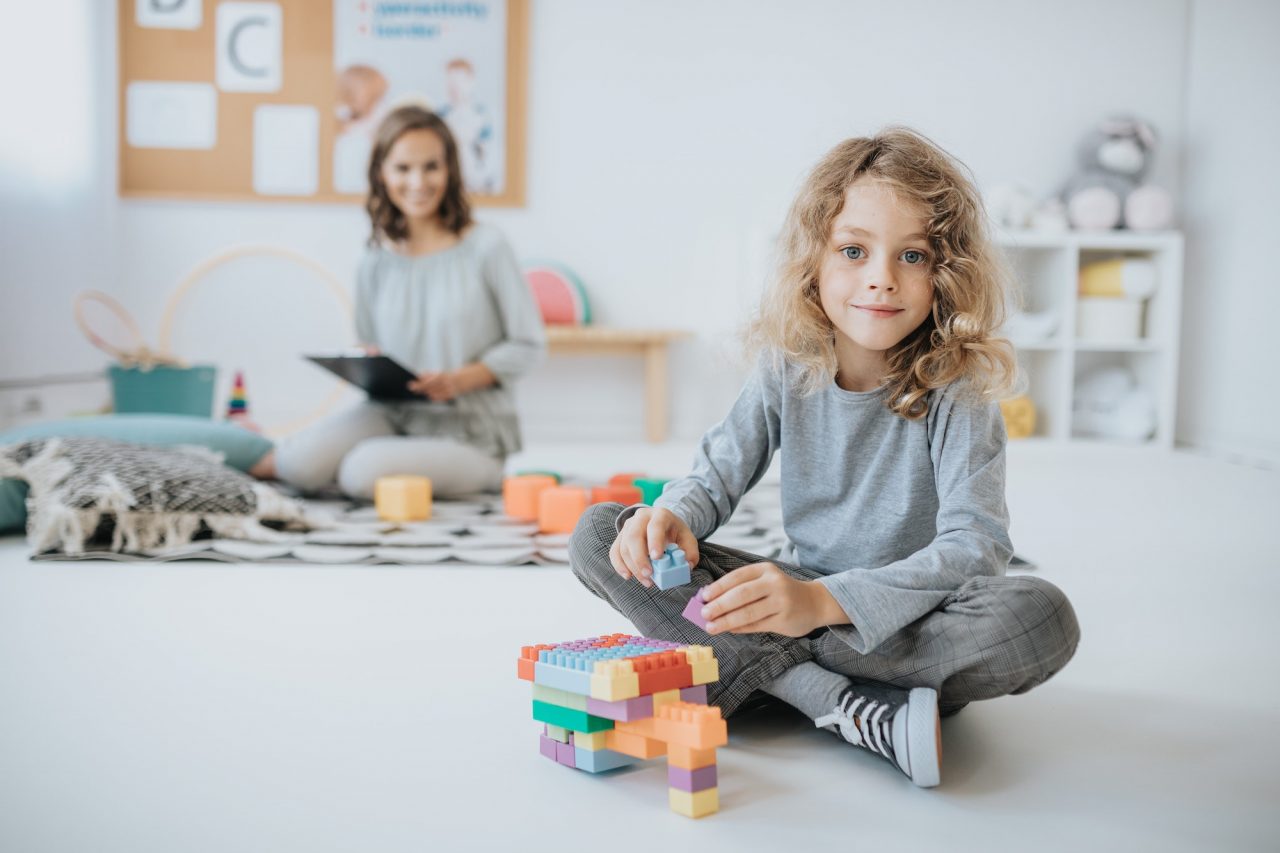Sensory Integration
What is SI Therapy?
Sensory integration therapy is a specialized approach aimed at addressing sensory processing difficulties in children. It focuses on helping children effectively process and respond to sensory information from their environment, including touch, movement, sight, sound, and proprioception (awareness of body position).
Through structured activities and sensory experiences, sensory integration therapy aims to promote more efficient neural connections in the brain, leading to improved sensory processing and modulation. The therapy is tailored to each child’s specific sensory needs and may include activities such as swinging, bouncing on therapy balls, tactile play, and proprioceptive activities like pushing or pulling weighted objects.
By enhancing sensory integration skills, this therapy can help children regulate their responses to sensory input, improve attention and focus, enhance motor coordination, and promote overall participation in daily activities.





How do I know if my child would benefit from SI?
Parents may consider seeking sensory integration (SI) therapy for their child if they observe any of the following signs or concerns related to sensory processing difficulties:
Overreactivity: Strong negative reactions to sensory stimuli, such as loud noises, bright lights, or certain textures, leading to avoidance or withdrawal from sensory-rich environments.
Underreactivity: Minimal response to sensory input, appearing unaware of or unbothered by sensations that typically elicit a reaction in others.
Sensory Seeking Behaviors: Engaging in repetitive or intense sensory-seeking activities, such as spinning, jumping, crashing into objects, or seeking out certain textures to touch or taste.
Poor Coordination: Challenges with motor coordination, balance, or body awareness, resulting in clumsiness, frequent falls, or difficulties with gross motor skills.
Difficulty with Transitions: Struggles with transitions between activities, environments, or changes in routine, leading to resistance, anxiety, or meltdowns.
Limited Play Skills: Difficulty engaging in imaginative or interactive play, preferring repetitive or solitary activities, or exhibiting limited exploration of toys or environments.
Feeding Challenges: Refusal of certain foods due to texture or taste sensitivities, gagging or choking during meals, or difficulties with chewing or swallowing.
Attention and Focus Issues: Distractibility, difficulty concentrating, or hyperactivity, particularly in environments with high levels of sensory input.
Emotional Regulation Problems: Difficulty regulating emotions, mood swings, anxiety, or sensory-related meltdowns triggered by sensory overload.
If parents observe these signs or have concerns about their child’s sensory processing abilities and its impact on daily functioning, consulting with a pediatrician or occupational therapist trained in sensory integration can provide valuable insights and guidance on whether sensory integration therapy may be beneficial for their child’s needs. Early intervention is crucial for addressing sensory processing difficulties effectively and promoting optimal sensory integration skills and overall well-being.
Our Approach
Maximize Your Child’s Potential With The Benefits of Professional Therapy!
Please call our office or click on the "Get Started" button. We will then review your insurance benefits and/or discuss private pay options
Consistent therapy attendance improves the effectiveness of our treatment plans. We will work with you to find a reserved weekly appointment time.
Typically a one-hour appointment that consists of standardized testing and clinical observation to assess developmental milestones.
After the evaluation, your therapist will communicate results, set goals, and create a treatment plan. Sessions are typically scheduled one to two times per week.
Testimonial
What they say about us
Our positive reviews stand as a testament to the unwavering dedication and transformative impact we’ve had on the lives of countless families, illuminating our commitment to excellence and compassionate care.



Why Choose Us
Building a brighter future for children, one step at a time.
When seeking the best care for your child’s therapy needs, DOTS Pediatric Therapy stands out as a trusted beacon of expertise, compassion, and comprehensive support.
We have a team of highly qualified and experienced therapists who specialize in pediatric care. With years of training and hands-on experience, they are adept at effectively addressing a wide range of developmental challenges.
We offer a comprehensive range of pediatric therapy services, including occupational, physical, and speech therapy. This ensures that children receive holistic care tailored to their individual needs, all under one roof!
We prioritize personalized care, recognizing that each child is unique and may require a customized treatment plan. By taking the time to understand the specific needs and goals of each child, our therapists can deliver targeted interventions that maximize progress and outcomes.






